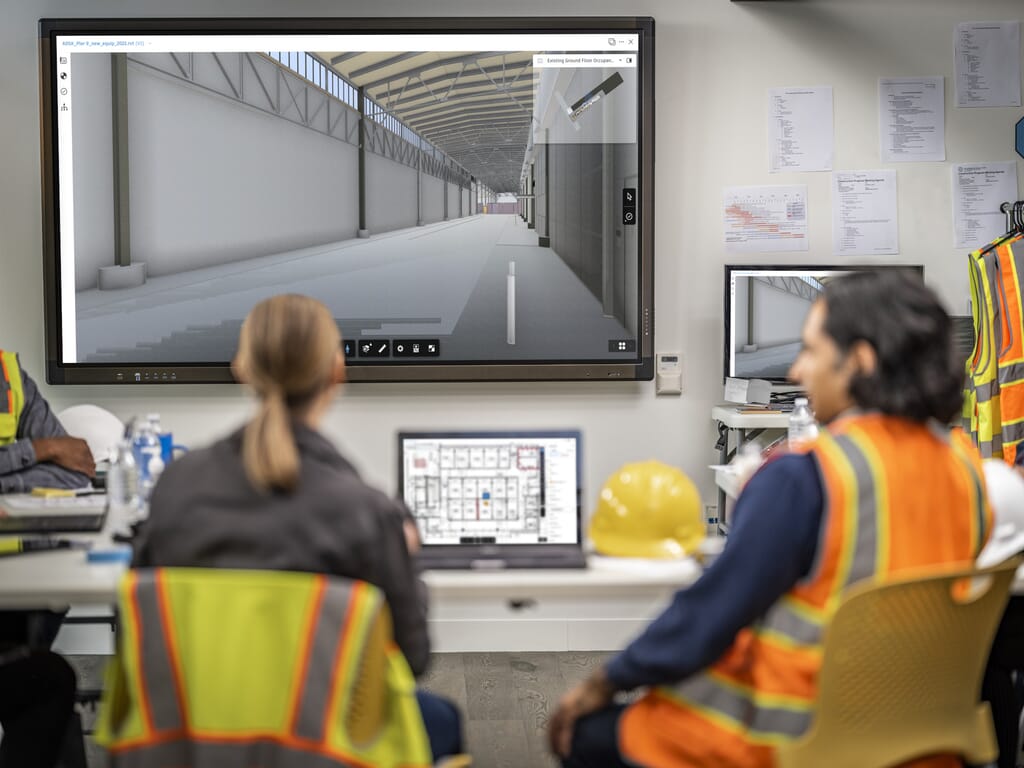Modern construction projects demand more data than ever before. The good news is that while past generations had to manage an overwhelming paper trail, digital can offer a single cloud-based hub for information, accessible in real-time by everyone involved in the project. This is the age of the Common Data Environment (CDE), and for ambitious businesses, it’s non-negotiable.
What is a Common Data Environment (CDE)?
At the most basic level, a CDE is a cloud-based digital collaboration area where a project leader can securely store all data, while giving access to relevant stakeholders to make changes and revisions in real-time. Used correctly, a CDE becomes the one-stop source of project data, used to gather, monitor and distribute anything from documentation to models.
What are the advantages of a Common Data Environment (CDE)?
With Autodesk recently finding that some 96% of all data captured in the engineering and construction industry goes unused, that 30% of initial data created during the design/construction phases is lost by project closeout – and that a staggering 13% of construction teams’ working hours were wasted hunting for project data – it’s clear there’s a problem in the industry. Below are just some of the reasons why a CDE could be the answer.
Common Data Environments enable collaboration. With every last element of project information held in a central system, the CDE represents a hub where team members can find up-to-the-minute data, make changes in real-time, coordinate with colleagues and make sharper decisions. Businesses that adopt a CDE report that it transforms their workflow.
Common Data Environments drive up efficiency. With automation eliminating the need to input data manually, the use of a CDE also cuts the risk of human error and misplaced information. As a result, the team knows it can rely on the information at its fingertips and makes better and faster decisions.
Common Data Environments tighten security. With all data and information locked down and access privileges at the discretion of project leaders, a CDE not only keeps data under close control but reduces the risk of information duplication and miscommunication by a third party.
What questions should you ask before introducing a Common Data Environment (CDE)?
While the long-term benefits are undeniable, it’s important not to blindly adopt a CDE. Here are some critical questions to consider at the outset.
Are your key stakeholders invested? The success of a CDE hinges on the buy-in of those who will use it. If the plan meets with resistance, consider trialling the technology at a smaller scale or on a single project to demonstrate its benefits. You should also think about a CDE training course to make the rollout as painless as possible – and Cadspec can help you there.
What about standardisation? Think carefully about which workflows and processes you’ll introduce first. Consider the areas where standardisation will have the most benefit and make sure you outline how the information sharing and distribution process will work across the business.
Are your people in place? An effective Common Data Environment depends on putting the right people in the correct roles. Think carefully now about who will be your administrator, BIM manager and so forth.
How do you see the future? You shouldn’t adopt a CDE just for the sake of it. It’s important to have a vision for where this new way of working will lead the business, while considering your parameters for success.
How should you structure a Common Data Environment?
To get maximum benefit from a Common Data Environment, we’d suggest the information is carefully subdivided and placed into three key areas.
Work in Progress – for information currently in development by the team, eg. schematics, partially complete models and unvalidated concepts.
Shared – for data signed off by the BIM manager and therefore considered ready for inspection by other teams.
Published – for information that is considered finalised and authorised for use.
Archived – for discarded or superseded material, to ensure it does not find its way back into the project’s evolving workflow
Where can I learn more about adopting a Common Data Environment?
Get in touch with the Cadspec team. We’re fully accredited by Autodesk – and experts in the Autodesk Construction Cloud that many global businesses consider the best software for streamlining information and workflow.
To discover more about Cadspec’s software and training, call the team on 01905 458000 or email info@cadspec.co.uk
Related Courses





